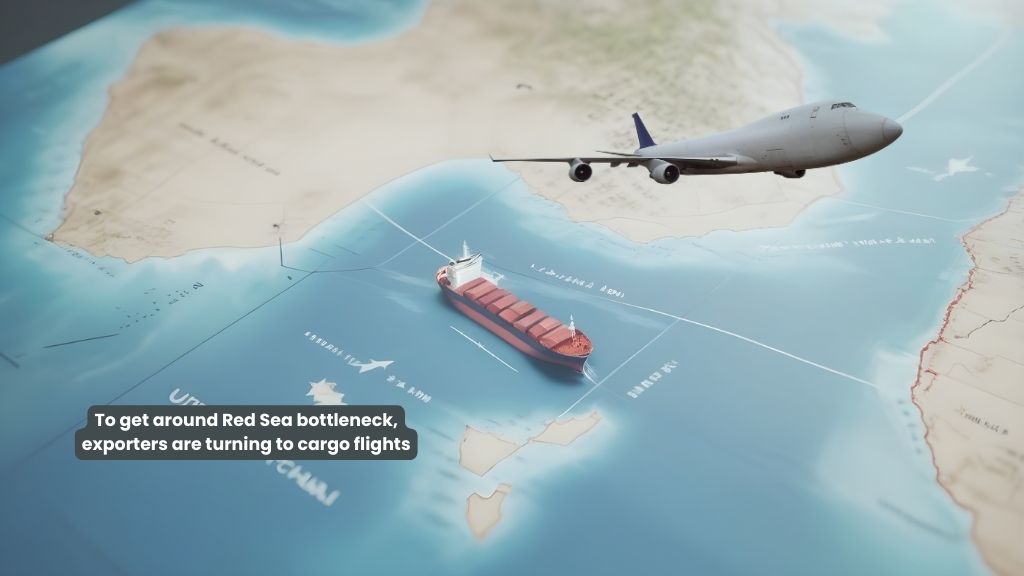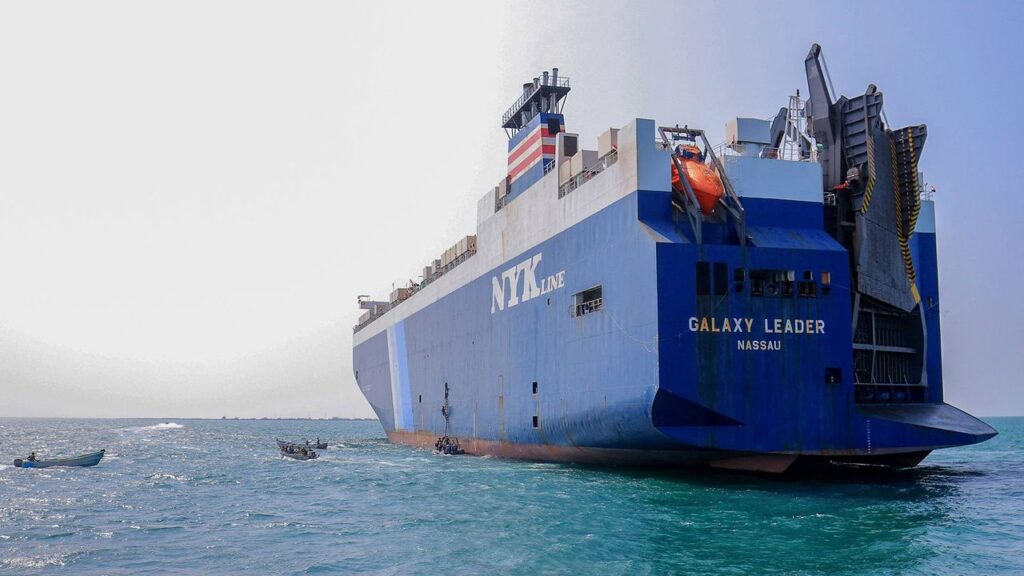To get around Red Sea bottleneck, exporters are turning to cargo flights

21st December 2023
In response to the deepening bottleneck crisis in the Red Sea, exporters are increasingly exploring cargo flights as an alternative route to bypass the danger zone and avoid the lengthy voyage around the southern tip of Africa. The Red Sea, a vital maritime passage connecting the Mediterranean Sea to the Indian Ocean, has recently become a challenging route for shipping due to heightened geopolitical tensions and security concerns.
The Red Sea bottleneck, exacerbated by regional conflicts and war between Countries, Vessel attack threats, has prompted exporters to seek alternative transportation methods to ensure the timely and secure delivery of goods. Cargo flights have emerged as a viable solution, allowing businesses to circumvent the perilous waters of the Red Sea and the extended journey around the Cape of Good Hope.
Cargo flights provide exporters with several advantages, including faster transit times and enhanced security. By opting for air transportation, businesses can avoid the potential dangers of navigating through the Red Sea, where incidents of Vessel attack and geopolitical tensions have escalated in recent years. Through the Suez Canal, a vital trade route connecting Europe, North America, and Asia has been hampered by the attacks. The cost of shipping containers has increased, sometimes more than tripling, as businesses look for alternative, frequently longer ocean routes to transport their products.

One of the primary concerns driving exporters to consider cargo flights is the unpredictable nature of the Red Sea bottleneck. The alternative route around the southern tip of Africa, although traditionally safer, is plagued by a lengthy voyage that increases transportation costs and time. Cargo flights offer a more time-efficient solution, allowing businesses to maintain supply chain continuity and meet customer expectations.
The shift towards cargo flights is not only a response to the current challenges in the Red Sea but also a strategic move to diversify transportation methods. By embracing air transportation, exporters reduce their reliance on maritime routes and create a more resilient supply chain. This diversification strategy not only safeguards against current geopolitical challenges but also prepares businesses for potential disruptions in the future.
Also Read: Houthis claim to be launching a missile at a merchant ship in Read Sea
As exporters explore cargo flights as a way out of the deepening Red Sea bottleneck, the air freight industry is experiencing increased demand. Airlines and logistics companies are adapting to accommodate this shift, expanding their cargo capacities and optimizing routes to meet the growing needs of exporters seeking alternative transportation solutions.
Red Sea disruptions could last for at least ninety days, according to teams led by the CEO of OL USA, who advises shipping and logistics companies.. From now until 2nd January, everything will be calm. After that, everyone will be frantic.


conclusion
The exploration of cargo flights as an alternative route reflects the adaptive nature of the global trade industry in the face of challenges in the Red Sea. Exporters are strategically diversifying their transportation methods to navigate the complexities of the current geopolitical landscape, ensuring the continued flow of goods and maintaining the integrity of supply chains. The increasing popularity of cargo flights underscores the importance of flexibility and innovation in addressing evolving challenges in the realm of international trade.
Click here to join our Telegram chanel
You will get information, news, and support related to Merchant Navy.
